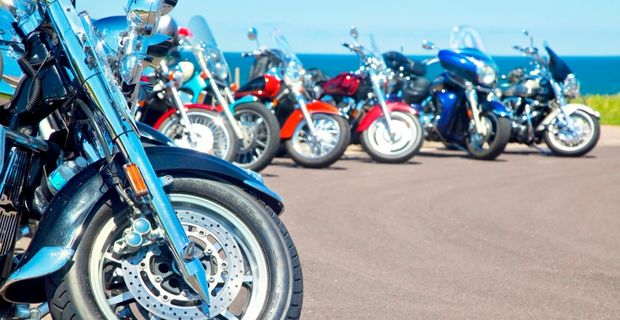Date Published: 2023/01/10
Read Time: mins
3 tips for buying your first motorcycle

Have you always dreamed of the wind whipping through your hair, leaning into the curves, and seeing the sights up close? If you've ever thought about buying a motorcycle, maybe this is your year.
Motorcycle trade shows are just around the corner, offering the perfect opportunity to check out various makes and models. Of course, buying a motorcycle involves a few, ahem, moving parts. If you're wondering how to buy your first motorcycle, keep reading. This guide will walk you through the bike-buying process.
1. Types of Motorcycles
Before buying a motorcycle, knowledge of the different types that are available is key. Categories are based on factors such as height, size, weight, engine size, functionality, and desired use. This will help you determine which bike is right for your needs. Here's an overview of the basic types of motorcycles available:
Standard: Used for touring and commuting, a standard motorcycle features an average seat height, an upright riding position, and low or mid-range handlebar placement. Engine capacity ranges from 125 to 1,000 cc. Standard bikes are a good choice for many beginning riders.
Cruiser: Cruising bikes have a lower seat height, mid-range handlebar placement, and a laid-back riding position. They offer that iconic "chopper" look and sound, with engines ranging from 125 to 1,000 cc. Cruising bikes are good for beginners and experienced riders alike.
Sport: Sport bikes are built for racing and speed, rather than long rides or commuting. That's because they have taller seats and low handlebars, so you'll ride in a forward-leaning position. They're more aerodynamic than cruisers or standard bikes, with an engine capacity from 500 to 1,300 cc for a fast ride. Sport bikes are better for intermediate and experienced riders.
Naked: If you're a beginning biker who really wants a sports bike, a "naked" motorcycle may offer a solution. This type of bike falls between sports and cruisers, with a more upright riding position and a bit more speed.
Touring: Dreaming of long road trips on a comfy bike? A touring bike offers wide seats at an average height, mid-height handlebars provide an upright riding position, and large fairings protect you from wind, rain and the road. With engine capacity ranging from 1,000 to 1,800 cc, these heavy bikes are best for more experienced riders.
Off-Road: If you want to explore the road less traveled — literally — an off-road bike helps you get off the beaten path. Also known as dirt bikes, they've got taller seats to accommodate enhanced suspension. With little- to no-front fairings and 150 to 425 ccs, these bikes aren't designed for commuting, but rather for rugged road conditions. They're a good choice for beginners.
2. Motorcycle Fit and Weight
When thinking about buying a motorcycle — especially your first motorcycle — fit is a primary concern. As a general rule, you should be able to comfortably reach and turn the handlebars, without having to shift your seat. Your feet should rest easily on the pegs, with your legs partially supporting your weight.
Here, seat height is key. When at a stop, you must be able to put both feet firmly on the ground. Being able to place your feet flat will make it easier to park and manoeuvre, as well.
The type, make and model of the motorcycle will also determine its weight. To ride safely, you'll have to handle your bike's weight. You must be able to lift it off its stand, push it and lift it off the ground. If a motorcycle is too heavy for you, you're more likely to experience a drop.
3. Safety Questions
Horsepower is another important factor when thinking about buying a motorcycle. Many new riders make a common mistake: purchasing a motorcycle that's too powerful.
Of course, you want a bike with enough power to get you where you want to go, at an appropriate speed. But a too-powerful engine also means a bike is harder to handle, making it harder to learn to ride smoothly. This can increase risk of accidents.
Instead, start with the right amount of horsepower. For most new riders, look for motorcycles with engine capacity under 600 cc.
Finally, call an insurance broker. The team at Orbit will help you determine how much and what type of motorcycle insurance you'll need. Protecting yourself, and your investment in your motorcycle, is a key consideration when you’re buying a bike.